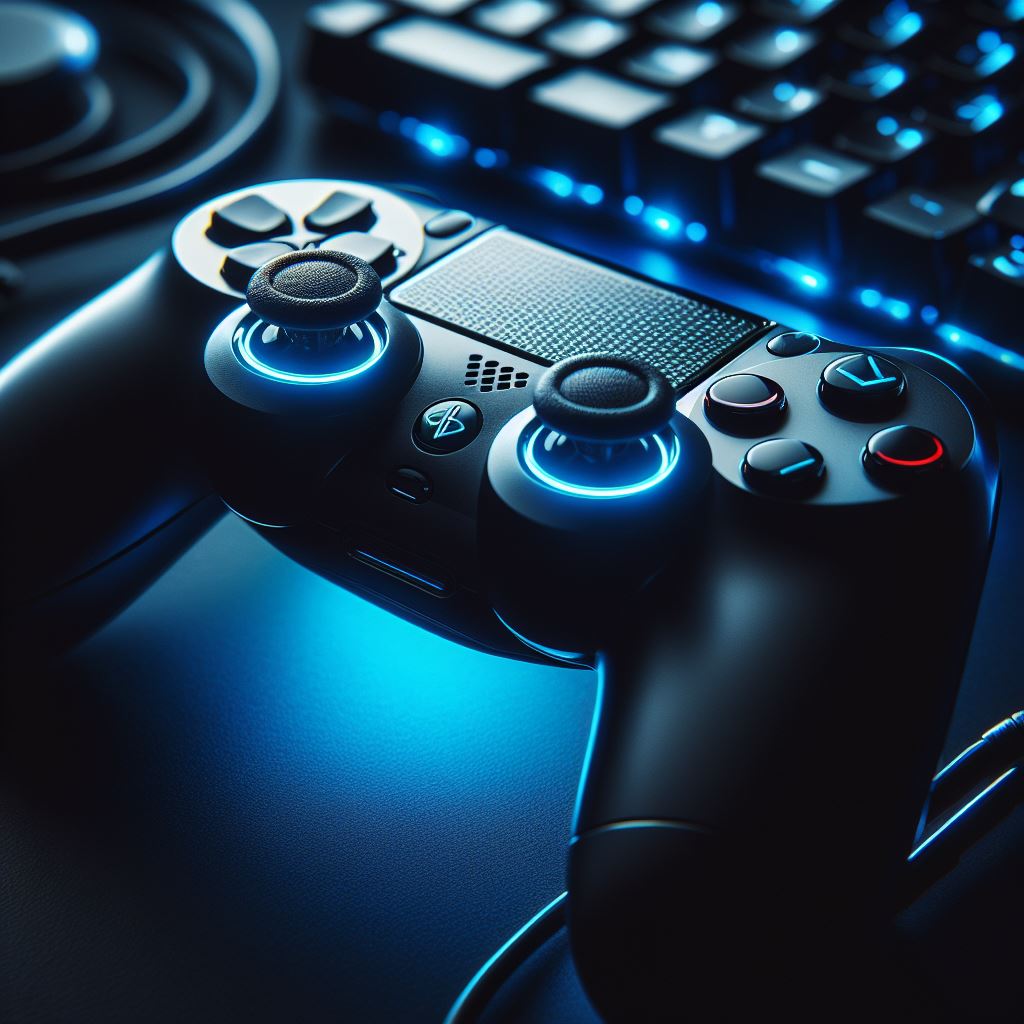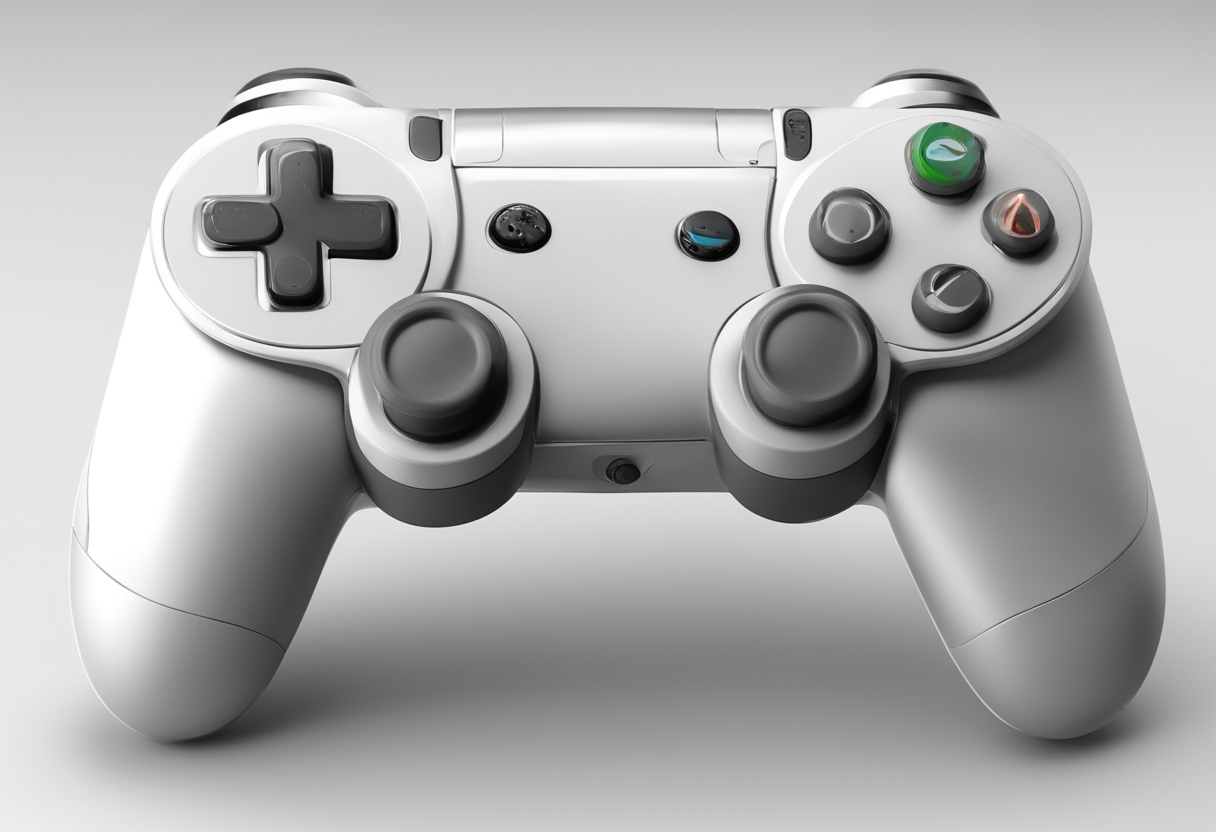The Role of MLCC in Game Controller

Multilayer ceramic capacitors (MLCCs) play a crucial role in the performance and functionality of game controllers. These tiny components are essential for various aspects of the controller’s operation, including power management, signal filtering, and ESD protection. Here’s an overview of the role of MLCCs in game controllers:
Power Supply Filtering: MLCCs are used to filter out noise and stabilize the voltage in the power supply circuit of game controllers. They help ensure that the controller receives a clean and stable power supply, which is essential for reliable operation.
Signal Conditioning: MLCCs are used for signal conditioning in game controllers, helping to filter out unwanted signals and ensure that the controller’s signals are clear and reliable. This is especially important for analog signals, such as those from joysticks or triggers.
ESD Protection: MLCC is used to protect the circuitry of game controllers from electrostatic discharge (ESD). They help absorb and dissipate any static electricity that could otherwise damage sensitive components in the controller.
Decoupling: MLCCs are used for decoupling in game controllers, providing a local energy source to specific components. This helps ensure that these components have a stable voltage supply and reduces noise on the power lines.
Clock Generation and Timing: MLCCs are used in clock generation and timing circuits in game controllers, helping to ensure that the controller’s timing is accurate and synchronized.
Motor Control: In some game controllers, MLCCs are used in motor control circuits, helping to regulate the speed and direction of motors used in force feedback or vibration systems.

MLCC Specifications for Game Controllers
MLCCs (Multilayer Ceramic Capacitors) are essential components in game controllers, providing crucial functions like power supply filtering, signal conditioning, and ESD protection. Understanding the specifications of MLCCs can help in selecting the right components for game controller design. Here are some key MLCC specifications for game controllers:
Capacitance (C): The capacitance of an MLCC determines its ability to store charge. For game controllers, MLCCs with capacitance ranging from a few nanofarads (nF) to tens of microfarads (μF) are commonly used. Higher capacitance values are often required for power supply filtering and decoupling.
Voltage Rating (V): The voltage rating of an MLCC specifies the maximum voltage it can safely withstand. Game controllers typically operate at low voltages, so MLCCs with voltage ratings of 25V or less are commonly used. However, higher voltage ratings may be required for specific applications.
Temperature Coefficient (TC): The temperature coefficient of an MLCC indicates how its capacitance changes with temperature. MLCCs with a temperature coefficient of X7R or X5R are commonly used in game controllers, as they offer stable capacitance over a wide temperature range.
Tolerance: The capacitance tolerance of an MLCC specifies the allowable deviation from its rated capacitance. MLCCs with a tolerance of ±10% or ±20% are commonly used in game controllers, depending on the application requirements.
Package Size: The package size of an MLCC determines its physical dimensions. For game controllers, MLCCs with small package sizes are preferred to save space and reduce weight. Common package sizes for game controllers include 0402, 0603, and 0805.
Dielectric Material: The dielectric material used in an MLCC determines its performance characteristics. For game controllers, MLCCs with a C0G (NP0) or X7R dielectric are commonly used, as they offer high stability and low losses.
Advantages of Using MLCCs in Game Controllers
MLCCs (Multilayer Ceramic Capacitors) offer several advantages that make them ideal for use in game controllers. These advantages contribute to the overall performance, reliability, and functionality of game controllers. Here are some key advantages of using MLCCs in game controllers:
Small Size: MLCCs are available in small and compact sizes, allowing them to be easily integrated into the compact design of modern game controllers. Their small size helps reduce the overall size and weight of the controller.
High Capacitance: Despite their small size, MLCCs offer high capacitance values, allowing them to store and release large amounts of energy quickly. This is particularly useful in applications where rapid changes in voltage are required, such as in button presses or joystick movements.
Low ESR and ESL: MLCCs have low Equivalent Series Resistance (ESR) and Equivalent Series Inductance (ESL), which means they can deliver energy efficiently without significant losses. This helps improve the overall efficiency of the controller’s circuitry.
Wide Operating Temperature Range: MLCCs can operate over a wide temperature range, making them suitable for use in game controllers that may be exposed to varying environmental conditions.
Reliability: MLCCs are known for their reliability and long lifespan, providing a stable and consistent performance over time. This is important for ensuring the longevity of game controllers.
Cost-Effectiveness: MLCCs are cost-effective compared to other types of capacitors, making them an economical choice for game controller manufacturers.
Compatibility with SMT Processes: MLCCs are compatible with Surface Mount Technology (SMT) processes, allowing for easy and efficient assembly onto the controller’s circuit board.

Tips for Designing with MLCCs in Game Controllers
Designing game controllers with MLCCs requires careful consideration of various factors, including performance requirements, space constraints, and compatibility with other components. Here are some tips to help you design game controllers with MLCCs effectively:
Understand Performance Requirements: Determine the specific performance requirements of your game controller, such as voltage rating, capacitance, and temperature stability. This will help you select MLCCs that meet these requirements.
Consider Size and Form Factor: MLCCs come in a range of sizes and form factors. Choose MLCCs that fit within the space constraints of your game controller while still providing the necessary performance.
Select the Right Dielectric Material: The dielectric material used in MLCCs can impact their performance. Choose MLCCs with a dielectric material that meets your controller’s requirements for stability, temperature coefficient, and reliability.
Avoid Over-Designing: While it’s important to select MLCCs that meet your performance requirements, avoid over-designing by choosing MLCCs with higher capacitance or voltage ratings than necessary. This can help reduce costs and save space.
Consider Compatibility with SMT Processes: Ensure that the MLCCs you choose are compatible with the Surface Mount Technology (SMT) processes used in game controller assembly. This will help ensure smooth and efficient assembly.
Use MLCCs for ESD Protection: MLCCs are effective in providing ESD protection for game controllers. Use MLCCs in circuits where ESD protection is needed to prevent damage to sensitive components.
Consult with MLCC Suppliers: Work closely with MLCC suppliers to ensure you select the right MLCCs for your game controller design. They can provide valuable insights and recommendations based on their expertise.
MLCC Reliability and Durability in Game Controllers
Multilayer ceramic capacitors (MLCCs) play a crucial role in the performance and reliability of game controllers. These components are subjected to various environmental and operational stresses during the lifetime of the controller. Understanding the reliability and durability of MLCCs in game controllers is essential for ensuring their long-term functionality. Here are some key points to consider:
Operating Conditions: Game controllers are used in a wide range of operating conditions, including temperature variations, humidity, and mechanical stress. MLCCs used in game controllers must be able to withstand these conditions without degradation in performance.
Lifetime Expectancy: MLCC manufacturers provide lifetime expectancy ratings for their components. Understanding these ratings can help designers select MLCCs that will last for the intended lifetime of the game controller.
Failure Modes: MLCCs can fail due to various factors, including mechanical stress, thermal cycling, and voltage spikes. Understanding the common failure modes of MLCCs can help designers implement strategies to mitigate these risks.
Quality Assurance: Ensuring the quality and reliability of MLCCs is essential. Working with reputable suppliers and manufacturers can help ensure that the MLCCs used in game controllers meet the necessary quality standards.
Testing and Validation: Conducting testing and validation of MLCCs before integrating them into game controllers can help identify potential issues early on. This can include testing for reliability under different operating conditions and stress testing.
Design Considerations: Designing game controllers with reliability and durability in mind is crucial. This can include proper placement of MLCCs to minimize mechanical stress, ensuring adequate cooling to prevent overheating, and using components with appropriate specifications for the intended application.
Environmental Considerations: MLCCs used in game controllers should be environmentally friendly and comply with regulations such as RoHS (Restriction of Hazardous Substances) to ensure safe disposal and minimal environmental impact.
